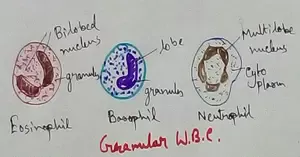Worksheet on Facts about the Universe
Worksheet on facts about the universe contains various types of questions on the earth and its neighbors, sky, moon and its phases and stars.
We know the earth is made up of land, water & air. The earth moves on its axis from west to east once in 24 hours.
I. Fill in the blanks:
(i) _______ part of the earth’s surface is made up of water.
(ii) The imaginary line that passes through the earth is called the _______.
(iii) The _______ of the earth causes day and night.
(iv) During the _______ moon phase, the moon is not visible.
(v) Groups of stars form different patterns called _______.
II. Answer the
following in brief:
(i) Why is the sun very important to the earth?
(ii) Why does the moon appear to shine though it has no light of its own?
(iii) Why does the moon appear to change its shape?
(iv) Why do the stars appear tiny to us?
III. Write ‘True’ and ‘False’ against each statement:
(i) The earth rotates on a real axis.
(ii) Ten planets move round the sun.
(iii) The nearest star to the earth is the sun.
(iv) The moon has many shapes.
(v) The stars are made up of hot gases.
IV. Match the columns:
Column A Column B
(i) Rotation of the days (a) 365
(ii) Constellation (b) 14
(iii) Revolution of the earth (c) 1 day
(iv) New moon to full pattern (d) star pattern
V. Circle the correct answer:
(i) Pluto/Jupiter is the farthest of all planets.
(ii) Only one-fourth part of the earth’s surface is covered with water/land.
(iii) The sun/moon is bigger than the earth.
(iv) Rotation/Revolution causes day and night on the earth.
(v) The moon/sun is a satellite of the earth.
Check the answers of the worksheet on facts about the universe:
Answers:
I. (i) one-fourth
(ii) axis
(iii) rotation
(iv) new
(v) constellations
II. (i) The sun is very important to the earth because it gives us heat and light.
(ii) The moon appear to shine though it has no light of its own because it reflects the sunlight falling on it.
(iii) The moon appears to change its shape because the earth revolves around the sun and the moon revolves around the earth due to these the positions of the earth and the moon change constantly.
(iv) The stars appear tiny to us because they are very far away from the earth.
III. (i) True
(ii) False
(iii) True
(iv) True
(v) False
IV. Column A Column B
(i) Rotation of the days (c) 1 day
(ii) Constellation (d) star pattern
(iii) Revolution of the earth (a) 365
(iv) New moon to full pattern (b) 14
V. (i) Pluto
(ii) land
(iii) sun
(iv) Rotation
(v) moon
• Universe, Weather and Seasons
Worksheet on Facts about the Universe
Worksheet on Facts About the Weather
Worksheet on Facts About the Seasons
From Worksheet on Facts about the Universe to HOME PAGE
Recent Articles
-
Formed Elements of Blood | Erythrocytes | ESR |Leukocytes |Neutrophils
Jan 15, 26 01:25 AM
Formed elements formed elements are constitute about 45 % of blood afeias haematocrit value packed cell volume mostly of red blood corpuscles and are of 3 types- erythrocytes, leukocytes and blood pla… -
What Is Plasma? | Blood Plasma | Proteins | Nutrients | Cholesterol
Nov 07, 25 10:29 AM
Blood is a mobile fluid which is a connective tissue and is derived from the mesoderm like cell any other connective tissue. Colour of blood is reddish and that flows inside the blood vessels by means… -
Disorders of Respiratory System | Tuberculosis | Pleurisy | Emphysema
Oct 28, 25 11:39 PM
Tuberculosis is very common disease and is caused by a type of bacteria called Mycobacterium tuberculosis. This disease causes different trouble in the respiration and infection of several parts of th… -
Regulation of Respiration | Respiratory Centres | Inspiratory Area |
Oct 14, 25 12:13 AM
Respiratory Centre is the area that controls the rate of respiration and it is observed to be located in medulla oblongata and pons. Respiratory Centre has the following will dispersed components like… -
Explain Transport of Gases | External Respiration | Tissue Respiration
Oct 09, 25 11:35 PM
In humans gaseous exchange is completed in the following ways the steps are - External Respiration or Breathing - Breathing in false taking in of Oxygen and giving out of carbon dioxide in the body. M…





New! Comments
Have your say about what you just read! Leave me a comment in the box below.